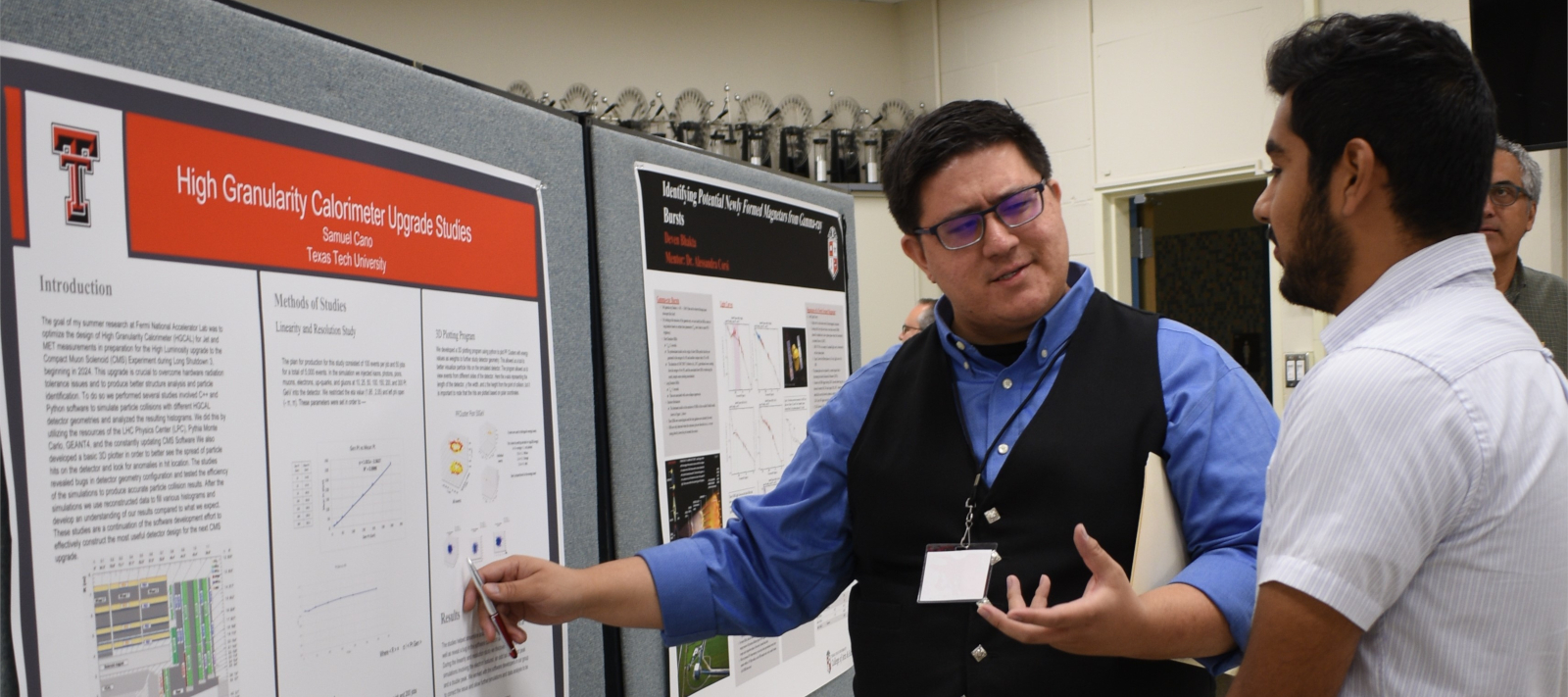Teaching Philosophy
Adaptability, Student-Centered Mentorship, and Continued Development

Adaptable Teaching
Good teaching is an intricate art which requires devotion and the willingness to be critical of oneself. There is no easy, simplistic formula for effective teaching. Flexibility in teaching strategies is essential for success as an educator; the approach that works well for an instructor in one setting may easily become disastrous in another. For this reason, an instructor must be open to challenging and changing their approach, both reactively and proactively, to ensure they excel under whatever circumstances are presented to them. For example, an instructor's approach to an inquiry-based introductory physics class does, and undoubtedly should, differ from their approach to a freshman seminar. An effective instructor must be able to assess the needs of their students in various scenarios and deliver solutions that work in each instance.
My teaching strategy is very flexible and adaptive, readily allowing for adjustments while retaining the integrity of a high standard. For traditional lectures, I prepare detailed lecture notes that are tailored to the general audience taking the course; however, I vary my delivery depending on each class’s particular dynamic. This variance could simply be a shifting of factoid focus to emphasize field-specific relevance or a more substantial adjustment to the prominence of certain topics. For example, when teaching an algebra-based physics class dominated by pre-professional health students, I focus on factoids related to medicine. However, I include aviation references if I have more commercial aviation students. Every class is different, so I often make adjustments throughout each semester. I have high expectations for my students, but also provide help in meeting those expectations by working closely with them to help them gain mastery of the subject matter.
Student Centered Mentorship
A large part of my strategy centers on the removal of artificial academic formalities that can and do create barriers to learning. For example, I exercise an open-door policy and do my best to create a respectful and trusting environment in which my students feel that they can come to me with questions or concerns. Students seeking my help are never turned away, and I encourage them to pose well considered, relevant questions. I tailor my explanations to each individual student and endeavor to be a knowledgeable helping hand rather than a judge that they need to impress.
My particular style of teaching was inspired by the faculty and staff of Austin College. The atmosphere they created was extremely beneficial to my development, and I owe who I am as an instructor largely to the hands-on mentoring I experienced as an undergraduate student. I seek to foster a similar environment for my students where they feel that I am collaborating with them rather than working against them, a quality often noted by students in my teaching evaluations. This includes encouraging my students to be the driving force behind their own academic and personal developments. Students need to be active participants in their education – I encourage this through high expectations, guided explorations of their understanding, and my own willingness to be both a mentor and a teacher.
There are many facets to being a mentor; however, one example of a profound effect is helping a student fundamentally reexamine how they view graded work. Reviewing graded work by looking for one’s mistakes rather than looking for what the instructor took off is a huge paradigm shift for many students, but it is also a huge step towards viewing instructors as guides to a wealth of knowledge rather than gatekeepers of a good grade. One way that I approach this is to create assignments that ask students to find errors in an incorrectly solved problem. This kind of exercise helps them to critically consider their own work and view problem solving from a more comprehensive place.
Continued Development
Education is inherently a collaborative effort and I have found that there is much that can be gained by working with other educators as a team. This can come in the form of coordinating while teaching parallel sections or discussing ways to improve student engagement at a brown bag lunch, but the key component is being open to learning from each other’s experiences. When I first started lecturing I had the good fortune of teaching in parallel to a senior faculty member who was willing to take me under his wing. We would meet weekly to touch base on how much material we each had covered and where we thought the students were struggling. I learned a lot from him; however, the thing that impacted me the most was that this experienced educator was open and able to learn things from me as well.
Another means of refinement comes from welcoming student comments. It is very important to me that my students finish out the course with an appreciation for the subject matter and a sense of satisfaction towards their experience. To that end, I strongly encourage students to leave constructive feedback, and I cite examples of how comments from previous semesters have shaped the course they experienced. The mentality and backgrounds of students change yearly, and there is a continual emergence of new teaching methods and technologies to implement in the classroom. The continued improvement of my proficiency as an educator is the only way I can ensure that I reach and motivate my students as I would like to. In the end, I aim to see students leave my classroom with the knowledge, confidence, and critical thinking ability that will help them reach their goals.